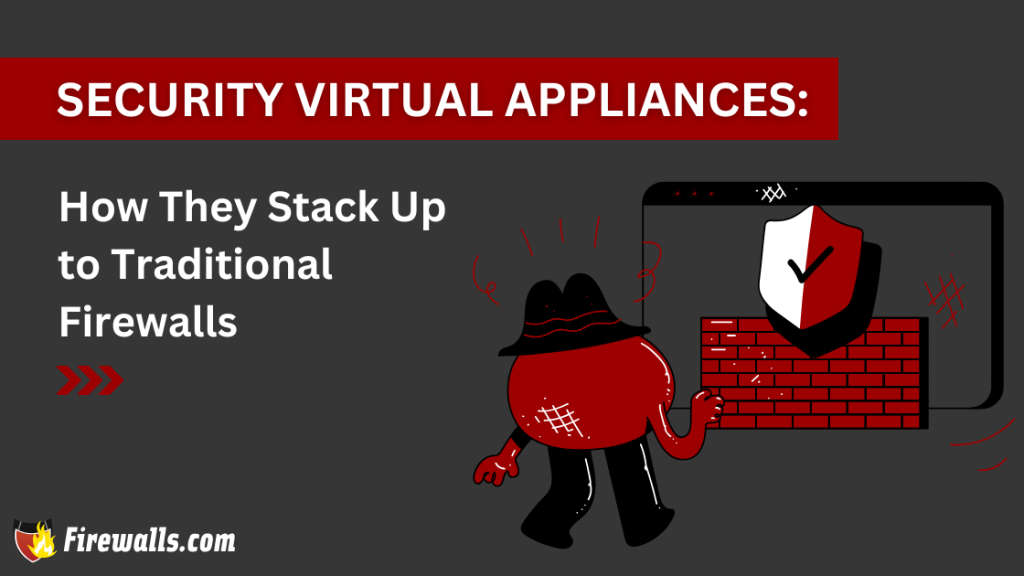
As the modern digital era in firewall technology continues to evolve, network security virtual appliances (NSVs) are becoming an industry norm. With benefits such as micro-segmentation of cyber attacks, security zoning, and immense scalability, NSVs are hard to ignore.
These virtual firewalls can be found in public, private, and hybrid cloud environments and stack up quite well against traditional firewall applications. Aside from simple efficiencies and general ease of use, the mix of virtual security and cloud technology has substantial upside for any modern business.
For this article, you’re going to get a brief comparison between NSVs and the traditional approach of firewall hardware.
Stepping Into Virtual Firewall Security
While traditional firewall hardware will still have its place for quite some time, integrations with virtual solutions are becoming increasingly popular. Between cost and time efficiency, as well as scalability and adaptability at every turn, it’s hard to argue with the application of NSVs.
Several key benefits of network security virtual appliances include:
- It can be accessed remotely
- Centralized control and doesn’t require traditional IT staff mainenance
- Lower costs and better time efficiency
- robust security features that are widely adaptable
To truly understand the importance of NSVs, it can help to have that same grasp on the ups and downs related to traditional hardware. Both are being actively used and although one may be a better solution in various circumstances, neither is perfect across the board.
Understanding NSVs
A perfect modern-day solution for enterprise-level network security, SonicWall NSVs and similar brands offer an unmatched level of efficiency. Between centralized firewall management across cloud deployments and diverse intrusion prevention systems, NSVs are an easy choice.
Having to manage physical firewalls can come with a few inefficiencies that can’t be overlooked, considering newer technologies. This isn’t to say physical firewalls aren’t still viable or commonly used in a hybrid environment, but many organizations are looking for a transition. Not only can NSVs and cloud tech make this easier, but it’s a solution that’s built for the long term. Nevertheless, it’s essential to consider both pros and cons, regardless of how great the firewall integration looks on paper.
Pros
- Efficiently inspects traffic at the application layer
- Automatically detect and block various threats such as C&C activities, malware, and spyware
- Impressive scalability alongside cloud infrastructure
- Centralized management across multiple cloud environments with ease of access in public, private, and hybrid firewall applications
- Much more cost-effective in the long run, saving on physical hardware, upgrades, and maintenance
Cons
- Considering the expanded capabilities and features, ongoing management requirements can be somewhat complex
- Initial set up costs can be higher than traditional firewalls due to varying start-up requirements such as configuration, virtual firewall software license, and more
- Complications with potential latency and performance issues stemming from high data throughput and resource-intensive tasks
- Limited to vendor-specific features, as this is bound to vary depending on the type of security virtual appliance you choose
The Reality of Traditional Firewall Hardware
Also referred to as an on-premise firewall, traditional firewall hardware has proven its place in enterprise-level security for years. The necessity of this technology is undeniable, but it’s facing much more innovative solutions. Regardless of that fact, firewall hardware still has its benefits and a handful of apparent downsides as well.
Generally found as a part of data centers or everyday offices to protect internal networks and documentation, traditional firewalls can be tricky to maintain. From compliance requirements to maintenance to performance limitations and other caveats, traditional firewall applications aren’t as dynamic. To summarize the reality of physical firewall tech, the pros and cons below can help provide a pretty clear picture of the situation.
Pros
- Tangible security solution for those who prefer hands-on network security management
- Potentially a mandatory choice for organizations that fall within certain regulations
- Proper configuration can offer a consistent firewall solution with minimal downtime
- Better perceived control over network security operations
Cons
- Common challenges associated with scalability needs
- Maintenance overhead is generally much higher than network security virtual appliances
- Minimal flexibility regarding firewall upgrades and customization to changing enterprise network security needs
- Installation can be rather complex and time-consuming, with a much larger learning curve involved
- Between setup and maintenance costs, traditional firewall technology can be much more expensive
It isn’t so much that one solution is superior in every way; it’s more about understanding which one to use based on your needs. Not all businesses come with the same network security needs. In some cases, virtual security may be a better option than traditional firewalls and vice versa.
Final Thoughts
While this article dives into many nuanced comparisons between the two firewall solutions, it’s understandable to have a few pending questions. Aside from understanding the ins and outs of both network security solutions, you also want to consider the providers of such technology.
Having the tech you’re looking for is part of it, but so is consistent customer support, upgrade solutions, and education when you need it most. Working with us at Firewalls.com is the only support you need to discover the network security solutions that are best for your organization.




